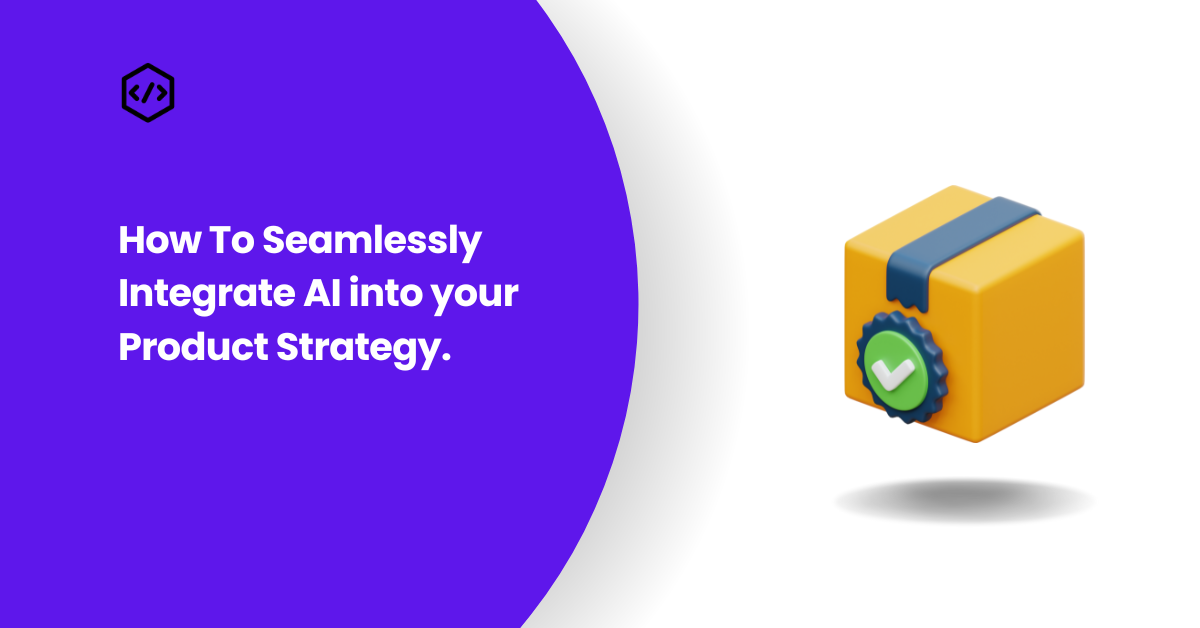

Elevating Your Product Strategy: Guiding AI Integration for Success
Dive into the transformative realm of AI integration for product businesses. As technology propels forward, adapting to artificial intelligence (AI) presents both unprecedented opportunities and formidable challenges. A recent survey by Workday found that 73% of business leaders feel the pressure to implement AI, yet 72% admit their organizations lack the necessary skills. This dilemma is further amplified when considering the impact of AI on product strategy. As AI accelerates product delivery, it simultaneously intensifies the uncertainty surrounding which solutions will prevail.
Navigating the AI Landscape
For businesses, the challenge extends beyond merely adopting AI technology. It’s about seamlessly weaving AI into the fabric of products to enhance user experiences, drive innovation, and gain a competitive edge. Understanding the diverse forms and applications of AI is crucial for revolutionizing development, customization, and engagement.
AI Definitions and Applications
AI isn’t just technology; it’s a strategic asset. Leaders must comprehend its various forms and applications:
- Artificial Intelligence (AI): Aims to mimic human intelligence, covering learning, reasoning, problem-solving, and language understanding.
- Artificial General Intelligence (AGI) vs. Narrow AI:
- AGI: Hypothetical, capable of any intellectual task humans do. Companies like Google and OpenAI invest heavily in exploring AGI.
- Narrow AI: Excels in specific tasks like spam detection or facial recognition.
- Machine Learning (ML): A subset of AI enabling machines to learn from data without explicit programming. Focuses on using algorithms to parse data, identify patterns, and make decisions.
- Deep Learning (DL): Uses neural networks to simulate human thinking, pivotal in applications like image recognition and voice assistants.
- Large Language Models (LLMs): Foundation models processing extensive text data, utilized in customer service, content creation, and software development.
AI’s current business use cases span automating repetitive work, creating content, and generating insights from vast data sets. From marketing to operations, AI enhances virtually every department, promising improvements and positive disruptions.
Pitfalls in AI Integration
While the allure of AI is undeniable, hasty adoption without a clear strategy can lead to significant challenges. Leaders often fall into common pitfalls:
Focusing Solely on Cost Reduction
While financial constraints are valid, using AI exclusively for cost-saving may backfire. McKinsey’s 2023 report revealed that only 19% of AI high performers prioritized cost reduction. Others aimed at increasing revenue, adding value through AI-based features, or creating new revenue sources.
Taking on Too Much Too Soon
Overhauling entire processes with AI from the outset can lead to unrealistic expectations and talent shortages. A phased approach, starting with a single product or process, allows for gradual skill development and continuous learning.
Overlooking Ethical Considerations
Ethical considerations in AI are paramount to avoid perpetuating biases present in data. Ensuring fair and representative data, employing unbiased models, and establishing transparency and accountability are vital.
3 Principles for Successful AI Integration
To harness AI’s transformative power, businesses need a solid understanding of the problem/solution space. Three foundational principles guide successful AI integration:
1. Stay Customer-centric
Amidst the AI wave, businesses must anchor themselves in customer-centric values. Key steps include user discovery, market insight, solution brainstorming, and tailoring solutions to specific user needs.
2. Be Strategic About AI Deployment
AI offers abundant opportunities, but deploying it haphazardly can lead to resource drain. Identify opportunities, deploy strategically, align solutions with overarching objectives, and treat AI as a specialized tool in your toolkit.
3. Maintain a Product Management Approach
Despite AI’s speed and efficiency, adhering to product management fundamentals is essential. Maintain balance, iterate and refine through a minimal viable product, and stay informed to fully harness AI’s evolving potential.
Thriving in the AI Era
Embracing AI goes beyond technology integration. Success lies in developing a clear, strategic approach rooted in customer-centric values, making judicious choices, and fostering a culture of continuous learning. For those ready to embark on this journey, start with an AI audit, evaluating your current product strategy and pinpointing potential areas for integration. Challenges lie ahead, but so do unparalleled opportunities for growth, innovation, and differentiation.

